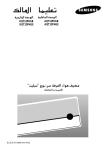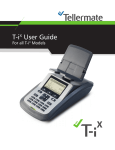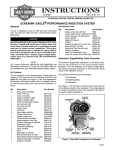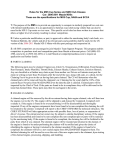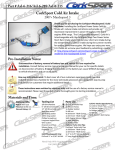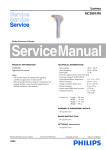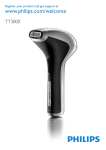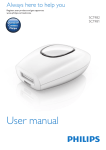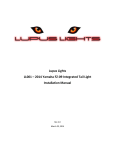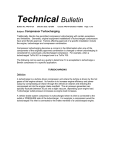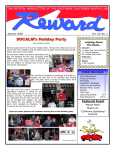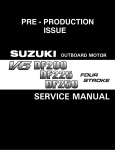Download Rules - Amazon Web Services
Transcript
January, 2012 – Version 2012.1
NASA Showroom Spec Miata®
Official National Rules
1. PURPOSE AND INTENT
Showroom Spec Miata (SSM) was conceived as an entry-level class with emphasis on simplicity,
equality and low cost.
SSM vehicles shall conform to Club Codes and Regulations (CCR), with the exception of the
following restrictions or specifically allowed modifications. These rules are not intended as guidelines
or suggestions and they will be vigorously enforced.
The Showroom Spec Miata (SSM) class is intended to provide the membership with the opportunity
to compete in a production-based car with limited modifications, suitable for racing competition.
The rules are intentionally designed to be more restrictive than the Spec Miata Class.
The vehicle identification number (VIN) shall correspond with the model-year automobile classified.
VIN plates or stampings shall remain in place. There must be a minimum of two (2) VIN plates or
stampings that correspond with the model year automobile classified.
2. CLASSIFIED CARS AND WEIGHTS
1990 - 1993 Miata 1600 cc @ 2300 lbs. with driver
3. AUTHORIZED MODIFICATIONS
The following items represent the only modifications and safety items permitted and/or required on
Showroom Spec Miata automobiles other than safety items as required in the current CCR. No
permitted component/modification shall additionally perform a prohibited function. No updating or
backdating of cars, models, specifications, and/or components thereof shall be permitted except as
specifically authorized.
A Mazda Factory Service Manual (FSM) for the specific make, model, and year of automobile is
required to be at the disposal of each entrant. The manual is intended to aid a Scrutineer in
identifying parts and the configuration of the automobile.
Overhauled engines must conform to the power and torque specification, and will be sealed by an
approved vendor. It is no longer required to have engines sealed by an approved vendor,
however engines must conform to power and torque specification of a maximum of 106hp and
102 ft/lbs and documented annually via a Dynomometer (Dyno) Certification Form. (Dyno
testing procedures are outlined in section 4).
The application and/or use of any painting, coating, plating, heat tape, or impregnating substance (i.e.
anti-friction, thermal barrier, oil shedding coatings, chrome, anodizing, etc.) to any internal engine,
transmission, or differential surface or internal or external exhaust manifold or downtube surface is
prohibited.
All adjustments shall be at the manufacturer's specification in the FSM and/or within the
manufacturer's specified tolerances except as permitted within these rules.
Stock replacement parts may be obtained from sources other than the manufacturer provided they
are the exact equivalent of the original parts. The intent of this rule is to allow the competitor to obtain
parts from standard industry outlets, e.g., auto parts distributors, rather than from the manufacturer. It
is not intended to allow parts that do not meet all dimensional and material specifications of new parts
from the manufacturer. Note that OEM “replacement” is not necessarily the same as OEM
“equivalent”.
All engines, components, and parts must have been offered for sale in a Mazda Miata, sold by a
dealer in the United States of America. All engines and their internal components must remain stock,
except as provided by these rules and within factory specified tolerances.
3.1. Engine Modifications
3.1.1.Induction System
3.1.1.1.
All air entering the intake tract shall pass through the unmodified stock air inlet.
3.1.1.2.
Cars must use the unmodified stock air box. An unmodified OEM-style filter
element must be installed in the air box.
3.1.1.3.
Fluid hoses and clamps, oil filters, fuel filters, and belts (fan, alternator, etc.) may
be substituted with others of equivalent OEM specifications.
3.1.2.Camshafts shall comply with the Official Spec Miata Camshaft Data as supplied by the
NASA Tech Department.
3.1.3.Any lubricant may be used. Oil additives are unrestricted.
3.1.4.Fuel System
3.1.4.1.
Unleaded fuel filler trap door and restrictor plate in filler neck may be removed.
3.1.4.2.
Refer to current CCR and class rules for permitted fuel. All cars are to have fuel
test port installed for the collection of fuel samples.
3.1.4.3.
The current CCR Section is further restricted for SSM to limit fuel to a maximum
of 94 octane. Fuel must be from a commercially mass marketed supplier (e.g.
Sunoco, Exxon, Mobil) or independent mass marketer (e.g. Sheetz). Limited use race
fuels are not permitted. Pump fuel may be purchased at the track (e.g. Sunoco at
Summit Point). The Series Director or Race Director at their discretion may spec the
track fuel or a common source close to the track. Also, it is within the power of the
Series Director to provide spec fuel to competitors. Competitors will be expected to
pay for fuel at market price. Race fuels such as, but not limited to, ERC brand are
prohibited. All fuel additives are illegal, per the CCR. Note- event supplemental rules
supersede this section.
3.1.5.Ignition/Electrical System
3.1.5.1.
Ignition timing is limited to a range of 10 to 16 degrees BTDC.
3.1.5.2.
Batteries may be replaced with those of an alternate manufacturer provided they
are of similar weight and size and are fitted in the standard location. Additional battery
hold-down devices may be used and are strongly recommended provided they do not
serve any other purpose, i.e. ballast. The combined weight of the battery and holddown device and/or battery box shall not exceed thirty-five (35) pounds.
3.1.5.3.
Spark plugs are restricted to the NGK BKR6E-11 (Mazda part number BP03-18110).
3.1.5.4.
Ignition wires are restricted to stock NGK(Mazda part number 0000-18-121A), or
Taylor (Mazda part number 0000-10-5301).
3.1.6.Exhaust System
3.1.6.1.
Catalytic converter may be removed and replaced with the replacement pipe part
# 0000-06-5423. All other exhaust components shall remain OEM stock. except for
the required The installation of Mazda Motorsports exhaust part #0000-06-5425
(Mazda Comp Exhaust) is allowed.
3.1.6.2.
Original exhaust system heat shields may be removed. Any heat shielding may
be added or removed aft of the stock downpipe, providing that the additional shielding
serves no other purpose.
3.1.7.Clutch System and Flywheel:
3.1.7.1.
All cars shall use either the stock OEM pressure plate Mazdaspeed part #B62216-220A or the ACT pressure plate (Mazdaspeed part #0000-0205401-SS). The
unmodified pressure plate shall be bolted directly to the appropriate stock, unmodified
flywheel. Any clutch disk may be used.
3.1.7.2.
The OEM flywheel friction surface may be resurfaced, but the minimum flywheel
weight (including the pilot bearing) is 17.6 lbs.
3.1.8.Cooling System
3.1.8.1.
Any radiator may be used, provided it is mounted in the original location,
maintains the same plane as the original core and requires no body or structure
modifications to install. New openings created by fitting an alternate radiator must be
blocked and may not be used for the purpose of ducting air to the engine.
3.1.8.2.
The stock cooling fan(s) must be maintained other than the AC fan, which may
be removed when the entire AC system is removed.
3.1.8.3.
If used, the aftermarket radiator shall be modified, if necessary, to mount the
stock OEM cooling fan in the original mounting location(s).
3.1.8.4.
Thermostats may be modified, removed, or replaced.
3.1.8.5.
The Upper Radiator Seal, part # NA75-50-OK7A is allowed. Racer tape or similar
and insulating foam strips may be used to seal gaps between radiator, radiator core
support, and plastic under-tray. Racer tape or similar may also be used in lieu of, or
in conjunction with, seal plate to seal the top of the core support.
3.1.8.6.
A radiator screen of one-fourth (1/4) inch minimum mesh may be added in front
of the radiator and contained within the bodywork.
3.1.8.7.
The factory air conditioning systems may be removed. Items that serve a dual
purpose, such as the alternator/air conditioning compressor bracket, may not be
substituted.
3.1.8.8.
Engine coolant fluid, coolant/heater hoses and clamps may be substituted.
Heater core may be bypassed, but it may not be modified or removed. Heater water
control valve(s) may be added or substituted.
3.1.9.Transmission/Final Drive
3.1.9.1.
Transmission and final drive ratios must remain stock for the year of car.
3.1.9.2.
The OEM Viscous limited slip (4.30:1) or Mazda Competition Parts; part number
QN10-64-A00 (previously T0Y1-27-200 & 0000-02-5501) is allowed.
3.1.9.3.
It is an allowable conversion to the 99-05 differential housing and the 4.3
differential gear ratio from the 99-05 model years (this conversion includes the
driveshaft and half-shafts). The original 90-93 model rear suspension uprights must
be retained.
3.1.10. Chassis:
3.1.10.1.
Suspension modifications are limited to the required addition of the
MAZDASPEED Motorsports Development "Spec Miata kit" (part number K-SPEC-M5SUSP) and those modifications detailed in this area. The following is a breakdown of
components supplied within these kits. All parts numbers are MAZDASPEED
Motorsports Development parts numbers. No substitution of parts is allowed. The kits
must be used in their entirety.
3.1.10.2.
Shocks: Front: Bilstein part #0000-04-5225-BL; Rear: Bilstein part #0000-045226-BL
3.1.10.3.
Springs: Front: Eibach ERS 700 lbs./6" part #0000-04-9700-06; Rear: Eibach
ERS 325 lbs./7" part #0000-04-9325-07
3.1.10.4.
Coil-Over kit: Front/Rear part # 0000-04-5402AW
3.1.10.5.
Anti-Roll Bars: Eibach kit part # 0000-04-5302-EB; Front: 24mm adjustable;
Rear: 15mm adjustable
3.1.10.6.
Sub-frame braces may be updated to stock 1997 configuration utilizing the
MAZDASPEED Motorsports Development Spec Miata kit (Mazda part # NA75-563AY).
3.1.10.7.
Anti-roll bar links may be replaced and may be adjustable, but the attachment
points must remain stock. The control arms and specified anti-roll bar may not be
modified. One end of the sway bar(s) may be disconnected as a suspension tuning
aid. The bar must remain in place and be solidly attached to the suspension on one
end.
3.1.11. Suspension alignments
3.1.11.1.
Caster and toe: unrestricted within the limits of the unmodified factory
adjustments
3.1.11.2.
Ride height: unrestricted.
3.1.11.3.
Camber: Front: Maximum 3 degrees negative (not more negative than three
degrees); Rear: Maximum 2.5 degrees negative (not more negative than two and
one-half degrees).
3.1.11.4.
No relocation or reinforcement of any suspension component or mounting points
is permitted.
3.1.11.5.
It is permitted to use the “R” model tie rod ends part # N021-32-280A
3.1.12. Hardware items (nuts & bolts) may be replaced by similar items performing the same
fastening function(s).
3.1.13. Manual or power steering racks may be used. Power steering racks may be converted to
manual by removing all power steering components and looping or capping hydraulic lines.
3.1.14. Towing eyes per CCR are required. Stock towing eyes may be modified or replaced.
3.1.15. Hubcaps and wheel trim shall be removed.
3.1.16. All chassis/structural/electrical repairs, if performed, shall be in concurrence with factory
procedures, specifications, and dimensions. Unless specifically authorized by the
manufacturer for repair or allowed by these rules, no reinforcement, i.e., seam welding,
material addition, etc., is permitted. No acid dipping of the unibody is permitted.
Undercoating removal is permitted.
3.1.17. Brakes
3.1.17.1.
Backing plates and dirt shields may be removed.
3.1.17.2.
Brake lines shall be replaced with steel lines or teflon lined metal braided hose.
All four hoses must be of the same size and specification.
3.1.17.3.
Cars with antilock braking systems must have the system disabled or removed.
3.1.17.4.
Parking brake mechanisms and actuating components may be removed.
3.1.17.5.
Brake pads and brake fluid are unrestricted
3.1.18. Wheels/Tires
3.1.18.1.
All wheels must be used within the following limitations:
3.1.18.2.
Required rim diameter is fifteen (15) inches and rim width is seven (7) inches.
3.1.18.3.
Minimum weight of wheel is 13.0 lbs. Spacers are permitted providing the
effective offset of spacer and rim is a minimum of 25mm. All four wheels must have
identical effective offset.
3.1.18.4.
All wheels must be one-piece metal castings (not multi-piece wheels, bolted,
riveted or welded together).
3.1.18.5.
After market wheel studs are permitted.
3.1.18.6.
The spec tire is the The Toyo RA-1 in size 205-50-15, shaved or unshaved.
3.1.18.7.
Tire tread (that portion of the tire that contacts the ground under static conditions)
shall not protrude beyond the fender opening when viewed from the top perpendicular
to the ground. To determine compliance, the vehicle should be rolled through a
powdered substance, as raced with driver, in order to indicate the tire tread contact
patch under static conditions.
3.1.19. Body/Structure
3.1.19.1.
Fenders and wheel openings shall remain unmodified. It is permitted to roll under
or flatten any interior lip on the wheel opening for tire clearance. Non-metallic inner
fender liners may be removed.
3.1.19.2.
Body repair shall be performed using every reasonable effort to maintain stock
body contours. Any body repair modification having as its purpose increased
clearance is prohibited. Cars shall meet the requirements of current CCR at all times.
3.1.19.3.
No air dams, wings, or spoilers are allowed other than the "R" package Miata
chin spoiler provided it is mounted in the OEM location.
3.1.19.4.
Windshield Clips/Rear Window Straps are permitted and recommended.
3.1.19.5.
Convertible tops and attaching hardware shall be completely removed. Cars may
compete with the Mazda factory detachable hard top or Snug Top in place (latches
shall be replaced with positive fasteners), but it is not mandatory. When no top is
used, driver shall wear arm restraints, and the cage must meet the helmet clearance
rule.
3.1.19.6.
Body side moldings, rocker panel moldings, and wheel opening trim pieces may
be removed.
3.1.19.7.
The plastic trim on the hood, windshield washer nozzles and tubing, and
windshield wiper “wing” may be removed.
3.1.19.8.
Hood and trunk clips are permitted. If so equipped, stock hood latches and trunk
latches may be disabled or removed.
3.1.19.9.
Ducting may be added to provide fresh air to the driver compartment. This
ducting shall be located in the driver and/or passenger vent window with no
modifications to the bodywork. Ducting shall not extend beyond the plane of the
original side windows. Such ducting will serve no other purpose than to provide cool
and/or fresh air to the driver.
3.1.19.10. To improve driver exit through the window area, the driver and/or passenger vent
window and vertical vent window supports may be removed as an assembly
3.1.19.11. Radio antennas may be removed. Antennas for two-way radios may be added.
3.1.19.12. “Pinch weld” jacking points may be reinforced with lengths of material not to
exceed 6” x 6” by 1/8” thick.
3.1.20. Driver/Passenger Compartment/Trunk
3.1.20.1.
The driver's seat shall be replaced with a one-piece bucket-type race seat. All
seat mountings shall be reinforced. Factory seat tracks/brackets may be modified,
reinforced, and/or removed to facilitate replacement mountings provided they perform
no other function. The OEM passenger seat must be removed, but a replacement seat
meeting the specifications of the driver seat may be substituted. To facilitate
installation of a safety seat, modification of the center tunnel and its intersection with
the floor pan shall be permitted provided that no such modification interferes with the
mechanical operation (e.g. exhaust system, transmission, etc.) and only the minimum
required removal is performed. Material added shall provide thickness and strength
approximately equal to the removed material.
3.1.20.2.
Any steering wheel, except wood rimmed types, and its required mounting
modifications may be used. Any shift knob may be used.
3.1.20.3.
Gauges and instruments, including data systems, may be added, replaced, or
removed. They may be installed in the original instrument(s) location using a mounting
plate(s), or any other location using a secure method of attachment. The vehicle’s
“Check Engine” light shall remain functional. Other than modifications made to mount
instruments and provide for roll cage installation, the remainder of the dashboard shall
remain intact.
3.1.20.4.
Any interior or exterior mirrors may be used. Mirrors may be removed.
3.1.20.5.
Carpets, center consoles, cargo bins, seat belts, floor mat, radio system,
headliners, dome lights, grab handles, sun visors and their insulating and attaching
materials may be removed. Other than to provide for the installation of required safety
equipment or other authorized modifications, no other driver/passenger compartment
alterations or gutting are permitted.
3.1.20.6.
The driver/passenger side door window glass, window operating mechanism,
and inside door latch/lock operating mechanism may be removed and the inner door
structural panel may be removed. The stock side impact beam and the outside door
latch/lock operating mechanism shall not be removed or modified.
3.1.20.7.
Two way radios may be used.
3.1.20.8.
Spare wheels and tires, jacks and tools shall be removed. Spare tire covers and
trunk mats and/or trunk carpeting shall be removed.
3.1.20.9.
Modifications may be made to the foot pedals to improve the comfort and
accessibility to the driver. Dead pedal/foot rest and heel stop may be added.
3.1.20.10. If ballast is required to meet the required weight it shall be added as follows:
3.1.20.10.1.
All ballast shall be securely mounted on the passenger floor.
3.1.20.10.2.
Each segment or stack of ballast shall be fastened with a minimum of
two (2) one-half (1/2) inch bolts for each fifty (50) pounds of ballast and positive
lock nuts of SAE Grade 5 or better and shall utilize 2” or larger diameter, load
distributing washers. A ballast plate secured to all four OEM passenger seat
mounting holes may be used.
3.1.20.10.3.
Holes may be drilled in the passenger floorpan for the purposes of
mounting the ballast and the floorpan may be reinforced for that purpose only.
3.1.20.11. All cars shall run with both door windows fully open (down).
3.1.21. Safety
3.1.21.1.
Roll cages shall meet all requirements of current CCR.
3.1.21.2.
Steering lock mechanisms must be removed or disabled.
3.1.21.3.
An electrical master ("kill") switch is mandatory
3.1.21.4.
Installation of a fire extinguisher or fire system is required.
3.1.21.5.
Glass headlights shall be taped. Rear brake lights may be taped with transparent
tape. Turn signals, front parking lights, backup lamps, and side marker lights must be
taped.
3.1.21.6.
Air bag systems shall be disarmed and all airbag components may be removed.
3.1.21.7.
In any automobile where allowed removal of seat belts, upholstery, etc., creates
an opening between the driver/passenger compartment and an exposed gas tank, or
part thereof, including the filler tube, a metal bulkhead which completely fills such
opening shall be installed.
4. Dyno Testing Procedures
A certified Dyno report consists of three separate Dyno tests with SAE correction. The highest peak
horsepower number of the three tests will be used as the official certified horsepower for weight to
horsepower calculations. A smoothing factor up to five (5) is permitted. All Dyno graphs must show
decreasing power for 300 rpm from the peak horsepower level or the car must reach the rev-limiter during
the Dyno testing. Dynamometer tests must be conducted on a Dynojet Model 248 or 224 Each Regional
SM or SSM Director may retain the option to specify which business locations will be the approved
centers for that particular region.
In addition NASA is actively conducting research on the use of in-car GPS monitoring units as an
alternate method of compliance testing of horsepower output. Traqmate GPS data acquisition monitoring
will be used in 2011 as an additional method of non-invasive compliance testing, but not as the sole
reason for disqualification. If NASA elects to begin compliance testing with GPS units without Dyno
testing confirmation, competitors will be given adequate notice prior to their use, including details of the
units to be used, so that they may do their own testing if desired.








